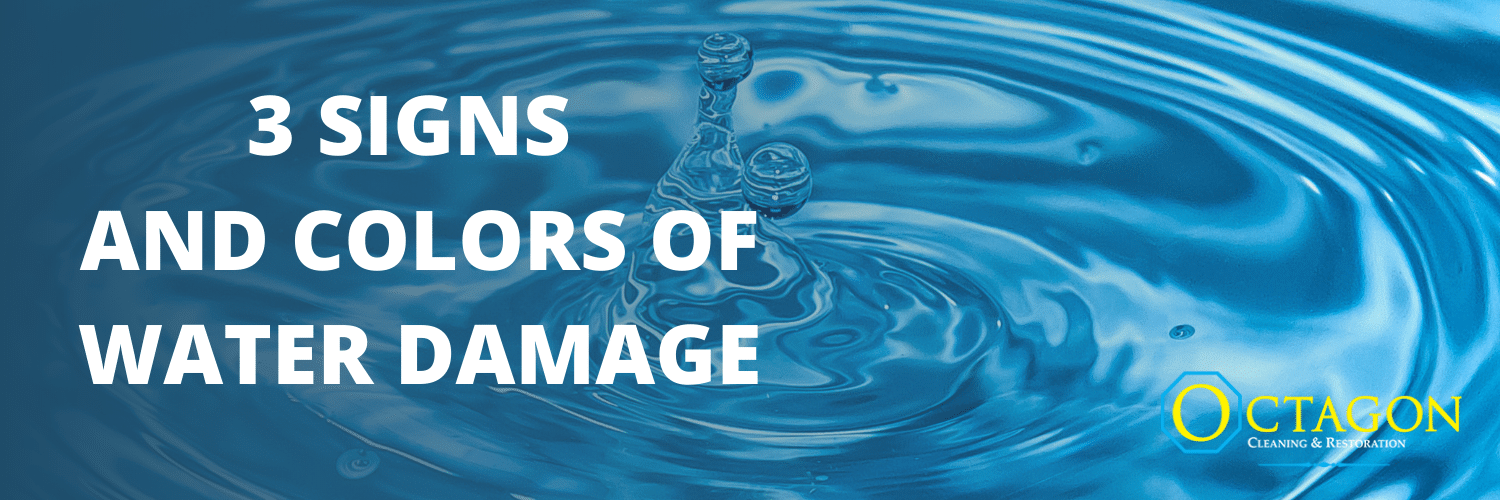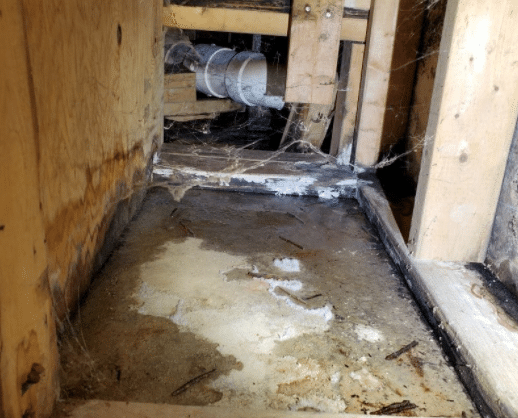
Why is it important to know and understand the signs and colors of water damage? Water is one of the most crucial elements on earth but can be destructive, frustrating, expensive to clean up, and can cause serious health issues if not cleaned up quickly. Understanding the signs and colors of water damage can help determine if the water poses a health risk and determines the proper way to perform the clean-up. In this blog, we will go over some ways to identify water damage, colors or categories of water, and recommendations on clean up methods based on the type of water involved.
Identifying Water Damage
What are some ways to identify water damage?
- Staining on ceilings, walls, or flooring
- Musty odors in your home
- Water bill increased but water consumption remains the same
- Bases of the cabinets under sinks sagging, swollen, or visibly water stained
- Pipes or fixtures leaking?
- Water staining around your foundation
- Flooring swelling or tiles lifting
- Water on flooring
- Mold Growth
Why does it matter how long the water has been there? The longer the water damage goes unattended, the more contaminated the water becomes regardless of what the cause of the damage was. Have you ever left a cup of water sitting on your bedside table for a day or more? Over time the water starts developing a film on the top. This film comes from whatever is in the air of your home. It can include dust, debris, bacteria, and so on.
Have you taken a sip of the water the next day and noticed that the water had developed a different taste? Well, this is an example of the water degrading and beginning to become unsafe to drink.
Did you know it only takes about 24 – 48 hours after water damage for mold and bacteria to begin growing? Pair that with what caused the water damage. Did it come from a burst pipe? Did it come from a sewer back-up? These are two very different sources of damage. One poses almost no health risks when addressed quickly, and the other can cause serious illness if not cleaned up properly.
3 Types of Water Damage to Look Out For
Water damage in the water restoration industry falls within three categories or “colors.” Clean, Gray, and Black. To learn more about the colors/categories of water damage, see below.
Clean water / Category 1
When water damage derives from a “clean water” source, it poses little risk to our health when ingesting or inhaling. Some of these sources include:
- Ruptured supply lines to appliances
- Burst pipes
- Sinks or tub overflows without contaminates
- This type of water poses little to no threat to our health if cleaned up quickly.
- Melting ice or snow
- Broken toilet tanks
Gray Water / Category 2
Gray water poses a greater risk to our health when inhaled or ingested and includes:
- Washing machine overflow during a cycle
- Leaking fish tank
- Water that comes from bathing
- Category 1 water that becomes contaminated as it flows over soiled surfaces
- Category 1 water that does not get clean-up up with-in 24 hours.
Black Water / Category 3
Blackwater poses risks to our health if ingested or inhaled. Blackwater is grossly contaminated and comes from sources such as:

- Flooding
- Toilet back-ups/ overflows
- Sewage
- Drain back-up
- Gray Water that has been left untreated
Water damage from any source left untreated over an extended period will continue to degrade and pose significant health risks. It is critical to respond as quickly as possible to clean up the damage to prevent further contamination and health issues. We have only touched on a few scenarios of the signs and colors of water damages. To learn more about what to do if you have water damage, contact our team.

